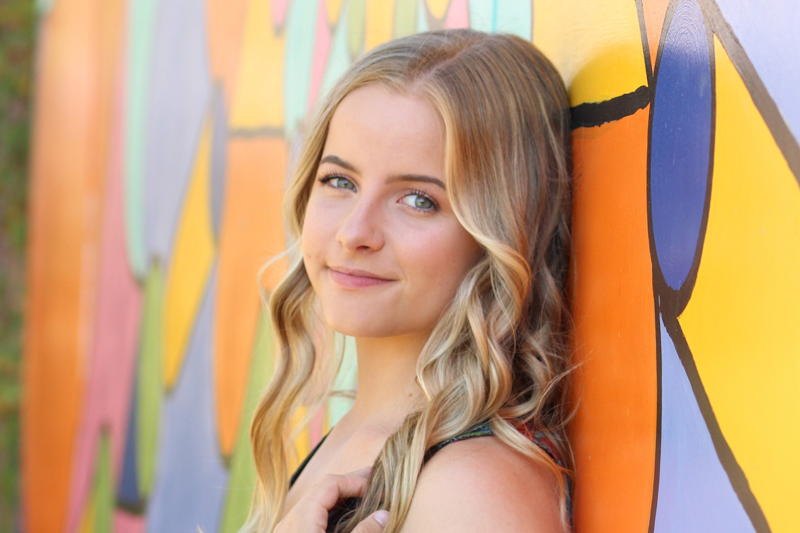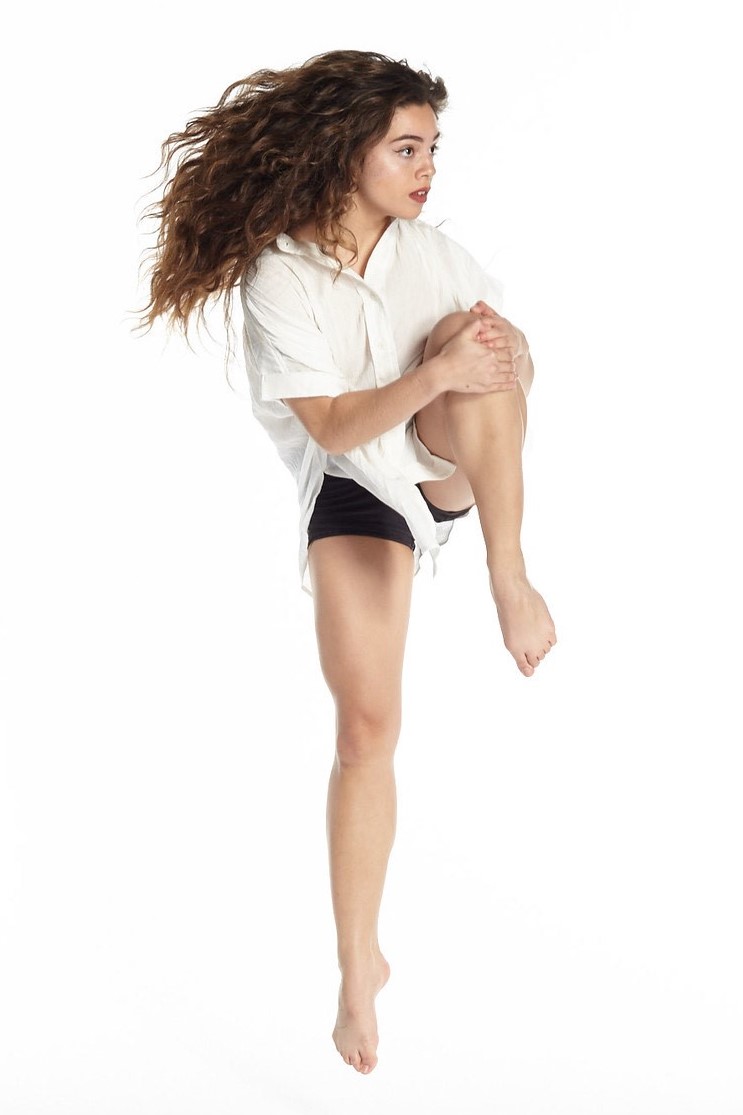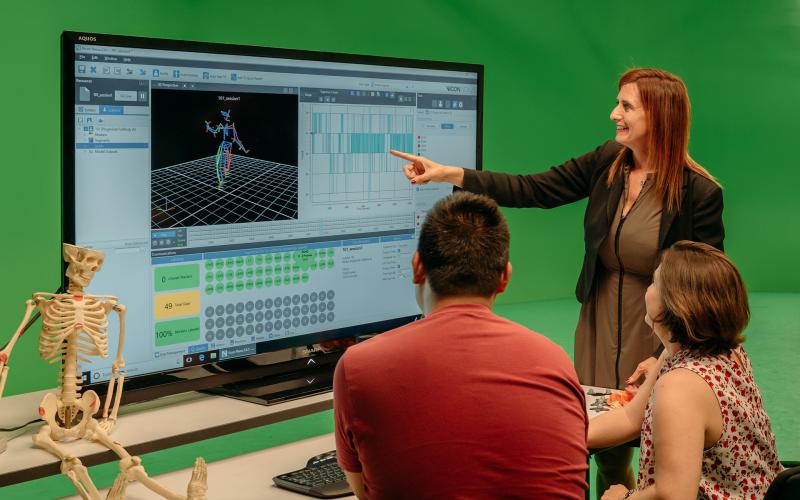Dance Professor Kelli Sharp Collaborates with Undergraduate Students in an Innovative UCI Research Program
By Richard Chang
At most universities, undergraduates don’t typically get opportunities to do serious research with their professors, let alone get published alongside them in professional journals.
But through UC Irvine’s Undergraduate Research Opportunities Program (UROP), undergrads are getting the chance to do both.
 |
Andrea D. Valentini |
At the UCI Claire Trevor School of the Arts, Dr. Kelli Sharp, an assistant professor in the Department of Dance, has teamed with two undergraduate students, Jessica C. Ruth and Andrea D. Valentini, to pursue a research project titled “Mental and Physical Wellness in Collegiate Dancers amid the COVID-19 Pandemic.”
It’s a survey of collegiate dancers at UC Irvine and other colleges and universities in the region to determine the effects of quarantine, isolation, not being able to attend dance classes in person and a crashing performing arts economy. At the time of this writing, no live indoor performances with audiences can occur in Southern California and most parts of the United States, due to the coronavirus. The cessation of live performances is expected to last well into 2021.
Before the pandemic, Ruth and Valentini had Dr. Sharp in a kinesiology class. Initially, the students, both double majors in dance and another field, sought to explore some of the motion-capture technology Sharp has in her lab.
But then the coronavirus pandemic happened, shutting down in-person classes at UC Irvine and campuses across the nation. Nearly everything shifted to online, virtual instruction.
“We decided to follow the path of how dancers were responding to COVID-19 within their physical and mental wellness,” said Valentini, a third year who is double-majoring in dance and anthropology, with minors in digital arts and economics.
“We saw a lot of disparities among students, and aspects causing them stress and struggle compared to the non-dance majors.”
Challenges for dance students include the environment they are dancing and practicing in. They are stuck at home, or in their apartments, or in some cases, in their dormitories.
“Very few people have spaces specifically designated for dancing,” Valentini said.
Dance students are experiencing cramped environments, she said, family members or other people around during lessons, and floors that are not equipped for dancing. Typically, a standard dance studio would feature a sprung wooden floor, which allows for some elasticity and bounce, aiding dancers in their movements and preventing injuries.
“We’re forced to train in our own homes,” said Ruth, a senior double-majoring in biological sciences and dance. “We don’t have a sprung floor, so (dancers) are more prone to knee, ankle and hip injuries.”
During this pandemic, Ruth has attended UCI virtually from her home in Hayward, in the East Bay of northern California. She said she lives with 10 family members, and it’s a challenge to attend class without someone getting in the way.
Valentini is from Rocklin in Placer County, about 30 minutes from Sacramento. But during school, she is living in Irvine near campus with one of her best friends.
“Being in a house is not at all an ideal environment to learn, especially with ballet and modern dance, with all the turns,” she said. “So many of the basic needs have been taken away with regards to safety. It’s harder for (dancers) to create, to have pride in what they’re doing, when they’re so focused on not hitting their furniture.”
Addressing the Basic Needs
According to Ruth, the UROP-funded study and survey are using Maslow’s Hierarchy of Needs as a template to assess what needs are being met or ignored during the pandemic.
Sharp added that the notion of “wellness” they’re exploring is based on the psychological principle that there are different types of wellness.
 |
Jessica C. Ruth |
So far, they have already discovered that for many dance students, basic, physiological needs — such as food and rest — and safety needs — such as security and a sense of not being in harm’s way — are not being fulfilled.
“Our concern is how we can address the needs of these students from a simple basic-needs perspective,” Sharp said. “Even having food is an issue. We added in a bunch of additional questions to try to address these concerns.
“I’m concerned as a scientist, what are the effects of COVID,” Sharp continued. “We should delineate more what’s really bothering them and why. Hopefully, we will come up with a plan, another grant or a community ask to aid these particular students, or produce some kind of outreach. We want to figure out how we can help them the best.”
In order to try and meet some of the needs for students, the department of dance distributed various tools to students registered for classes, including 4’ x 4’ Marley squares (flooring), portable ballet barres, mini tripods for screen dance and mini skeletons for Dr. Sharp’s courses in injury prevention and kinesiology.
The students plan to survey about 1200-1500 students. The majority will most likely be UCI students; however, Valentini and Ruth will reach out to other schools, including Cal State Fullerton and Chapman University, and possibly Irvine Valley College, Saddleback College, Orange Coast College, USC and UCLA.
“Because of this pandemic, students have been really affected financially, therefore physiologically,” Ruth said. “Parents and students have been laid off from their jobs, so money is tight. Out-of-state students are paying extra money for online classes, and their parents, a lot of people’s parents, had to do a career switch, or had to deal with not having a job.”
And the impact upon dancers, who rely on each other’s physical presence during practice and performances, as well as a sense of community, cannot be understated.
“As an art form, dance is so reliant on relationships and human contact,” Ruth said. “It’s literally a human art form. If we rely solely on screen dance, we can’t feel each other’s energies anymore. And that is an integral pillar of the dance education here at UCI.”
Creating Opportunities
On the bright side, the UROP program will include an end-of-the-school-year symposium, during which students and faculty will get to present their work. In addition to Dr. Sharp and her students, five other faculty members from the Claire Trevor School of the Arts and eight undergraduate students are receiving funding and support from UROP this year.
Plus, there is the distinct possibility that Ruth and Valentini could get their work published, which would be a step ahead toward graduate education, which they both said they intend to pursue.
“I am extremely excited and grateful,” Ruth said. “I hope our work is a really great contribution to the community of psychology, and mental health in general. But we also want to give back to our dance community, and the community that UCI has made. Also, we may be able to even suggest how we can aid this problem.”
Sharp says she has seen many bright, motivated students like Ruth and Valentini since she started working with undergrads in 2005. (She originally started her UCI career in the School of Medicine in 1999.) She’s happy to share her lab, knowledge and access to resources, academic and otherwise.
“We’re at a very high-level research institution,” she said. “I think the quality of undergrads that you get is extraordinary. Also we cultivate a pretty high bar and expectation, and everyone works together well.”
About her students Ruth and Valentini, Sharp commented, “They’ve done a majority of the work. And they’re both fantastic artists. They’ve taken a really unfortunate situation and are turning it into a positive one. It’s pushing them to be multi-modal.”
Valentini said she has already learned a lot through this UROP experience. “I discovered how interdisciplinary the arts are, especially here at UCI,” she said. “To have research projects like this one can ultimately create a good impact on the students and the school in general. I’m super thankful I’m a part of it. It has truly enriched my experience within Claire Trevor and UC Irvine.”
At Claire Trevor School of the Arts (CTSA), we not only teach creativity, we are the creative engine that powers innovation at UCI. For more than five decades, Claire Trevor faculty and students have set the highest standards for practicing traditional art forms while pioneering new ones. Our faculty and alumni are recognized globally for their contributions to art and culture. We invite you to join us as we build on CTSA’s remarkable legacy of exploring new frontiers in the arts, cultivating new voices, and expanding our role both on and off campus.
For more information, or to learn more about giving to the Claire Trevor School of the Arts, please visit brilliantfuture.uci.edu/claire-trevor-school-of-the-arts or contact Sarah Strozza at sstrozza@uci.edu or (949) 824-0629.

